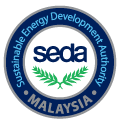Malaysia’s Feed-in Tariff (FiT) system obliges Distribution Licensees (DLs) to buy from Feed-in Approval Holders (FIAHs) the electricity produced from renewable resources (renewable energy) and sets the FiT rate. The DLs will pay for renewable energy supplied to the electricity grid for a specific duration. By guaranteeing access to the grid and setting a favourable price per unit of renewable energy, the FiT mechanism would ensure that renewable energy becomes a viable and sound long-term investment for companies industries and also for individuals.
Key terminologies in Feed-In Tariff :
The passing of the RE and SEDA Acts 2011 in April 2011 did not happen by chance. Introduction of the feed-in tariff (FiT) to Malaysia began as early as 2004, and in 2011, the years of effort finally culminated in the passing of the two laws related to sustainable energy. The result is the dawn of a new era for Malaysia in a move towards achieving energy autonomy and mitigating climate change. The milestones leading to the implementation of the FiT are as follows (in chronological order) :







